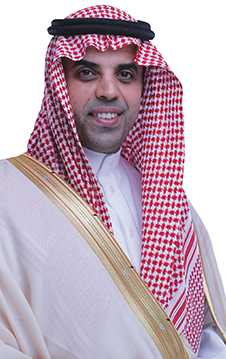Q: Is Saudi Arabia on track to meet its foreign direct investment [FDI] targets as detailed under the National Transformation Program [NTP] and Vision 2030?
A: Saudi Arabia is the largest market in the region, with one of the biggest reform agendas worldwide. The reform agenda is supported by a high commitment from the government and the leadership of the country, and is linked to performance indicators and targets similar to the way big corporates are run. The Saudi Arabian General Investment Authority [Sagia] has a large role to play in helping the country reach the future set out for it by Vision 2030.
One of the main pillars of Vision 2030 is for Saudi Arabia to become an investment powerhouse – this will happen partly through increasing FDI's share of gross domestic product from 3.8% to 5.7%. The NTP has set the target for us to increase annual investment from SR30bn [$8bn] to SR70bn by 2020.
To meet this goal, we are seeking to enhance our engagements with both existing investors and potential investors, to encourage them to increase their investment, or to take their first step in their investment journey in Saudi Arabia. The number of licences we are issuing is increasing in a manner we are more than comfortable with and we are very optimistic.
Sagia has developed a value proposition for Saudi Arabia as well as for each of the high-priority sectors in the country, and is currently involved in multiple markets to reach out to the right quality FDI. Sagia succeeded in positioning Saudi Arabia among the key locations for doing business in the region.
Q: In what ways can recent commercial relationships established between Sagia and international partners help Saudi Arabia to meet its Vision 2030 objectives?
A: With Vision 2030, Saudi Arabia is uniquely positioned to enhance regional prosperity and growth. Its location connecting the continent allows the country to be considered as a hub for doing business and exports for multiple sectors and business activities.
The country has developed multiple game-changer projects, including and not limited to privatisation, giga-projects and others. It possesses the right logistic and technological infrastructure to facilitate doing business in the country and is improving the quality of life through expanding lifestyle, tourism and cultural projects.
Sagia is partnering with major international companies across all of its sectors, linking them to the right stakeholders and the right investment opportunities, and is helping them to successfully navigate the Saudi market and ecosystem.
All the reforms that are being implemented to ease the process of doing business for an investor in the country – along with the opportunities introduced through Vision 2030 – are attracting more investments to Saudi Arabia and therefore play a leading role in meeting Vision 2030’s objectives.
Saudi Arabia is uniquely positioned to enhance regional prosperity and growth
Q: What are the key obstacles facing foreign investors in Saudi Arabia today?
A: With the participation of the private sector and other governmental entities, Sagia works on identifying and improving the challenges and obstacles that investors and businesses face through collaborative committees and workshops between involving ministries and authorities in their journey to achieve Vision 2030.
We have launched a functioning programme to improve the investment climate in order to compete with other developed countries. Based on the 2018 Ease of Doing Business report issued by the World Bank, Saudi Arabia has carried the largest number of reforms in the Middle East and north Africa region.
The reforms include... shortening the time for documentary compliance for exports and imports. Minority investors’ protections have been strengthened by increasing transparency and shareholder rights; Saudi Arabia was ranked 10th globally regarding this reform.
Q: What are Sagia’s priorities over the medium term?
A: Sagia is looking to secure high-value investments that add more than 5500 jobs into the economy and an added value of $10bn, while ensuring that Saudi Arabia is being promoted by leveraging the 'Invest Saudi' brand. There are efforts to make economic and regulatory reforms; to have an attractive and a hospitable investment climate by reaching a 79% in the World Bank distance-to-frontier metric by 2020; increasing investors’ satisfaction through their investment journey; and having a close relationship with them by opening international offices.












